THE AUDITORY MODELING TOOLBOX
exp_baumgartner2021
Reproduction of the sound externalization based on multiple static cues
Usage:
data = exp_baumgartner2021(flag)
Description:
exp_baumgartner2021(flag) reproduces figures of the study from Baumgartner and Majdak (2021).
The following flags can be specified
| 'fig2' | Externalization ratings: actual data from psychoacoustic experiments (closed circles) and simulations of the single-cue models (open symbols):
|
| 'fig3' | Optimization and performance of single-cue models. Cue-specific sensitivities used as optimization parameters. Higher values denote steeper mapping functions. Simulation errors as the RMS difference between the actual and simulated externalization ratings. Per experiment, the smallest error indicates the most informative cue. |
| 'fig4' | Simulation errors for different decision strategies and cue combinations show that static combination (WSM) based on monaural and interaural spectral shape cues (MSS, ISS) performs best. RMS simulation errors for different strategies and pooled experimental data, N=54. Error bars denote 95% confidence intervals estimated via bootstrapping (1000 resamples). WSM: weighted-sum model; L/M/WTA: looser/median/winner takes all. Individual cue contributions. Cue abbreviations defined in Tab.1. Top: Simulation errors for pairwise combinations of considered cues. Dashed line shows the border of significant difference to the best pair (MSS and ISS). Bottom: Considered cue pairs with their respective weights (encoded by brightness). Add flag supplements to also show the results for evaluations based on rank correlations. |
| 'hartmann1996' | Models experiments from Hartmann & Wittenberg (1996; Fig.7-8):
|
| 'hassager2016' | Models experiments from Hassager et al. (2016; Fig.6). The mean of the seven listeners perceived sound source location (black) as a function of the bandwidth factor and the corresponding model predictions (colored). The model predictions have been shifted slightly to the right for a better visual interpretation. The error bars are one standard error of the mean. |
| 'baumgartner2017' | Models experiments from Baumgartner et al. (2017). Effect of HRTF spectral contrast manipulations on sound externalization. Externalization scores were derived from paired comparisons via Bradley-Terry-Luce modeling. |
| 'boyd2012' | Models experiments from Boyd et al. (2012; Fig.1, top). Average externalization ratings of 1 talker for NH participants against mix point as a function of microphone position (ITE/BTE) and frequency response (BB/LP). The reference condition (ref) is the same as ITE/BB. Error bars show SEM. |
Examples:
To display indivdual predictions for all experiments use :
exp_baumgartner2021('fig2');
|

|
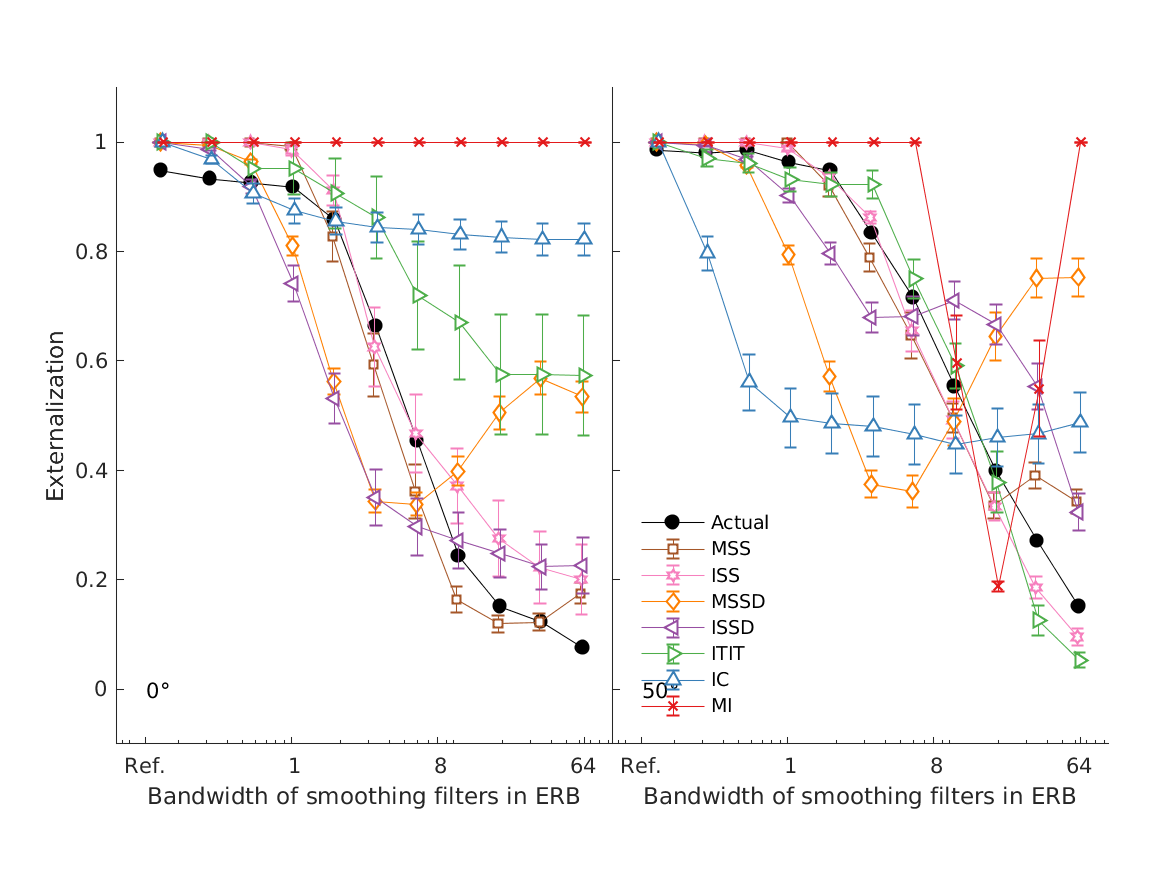
|

|
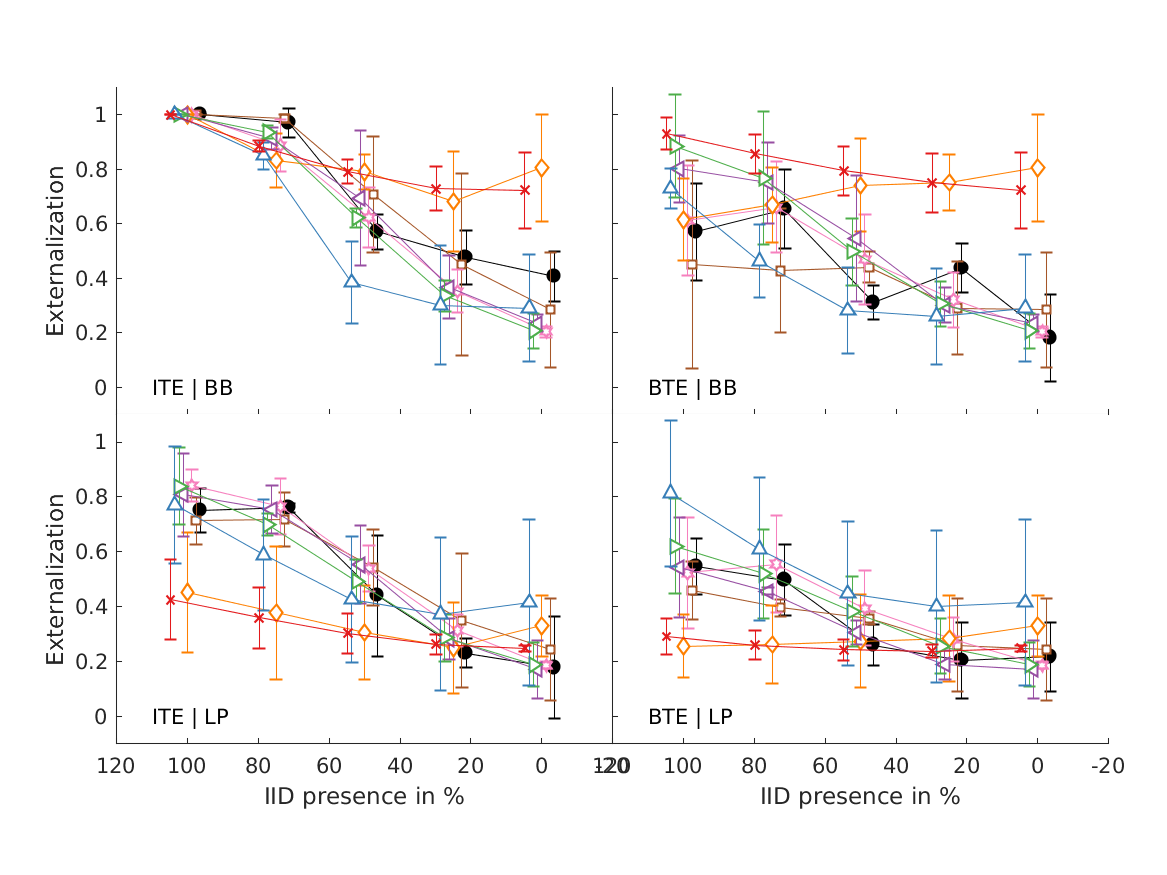
|
To display summary results for all experiments use :
exp_baumgartner2021('fig3');
|
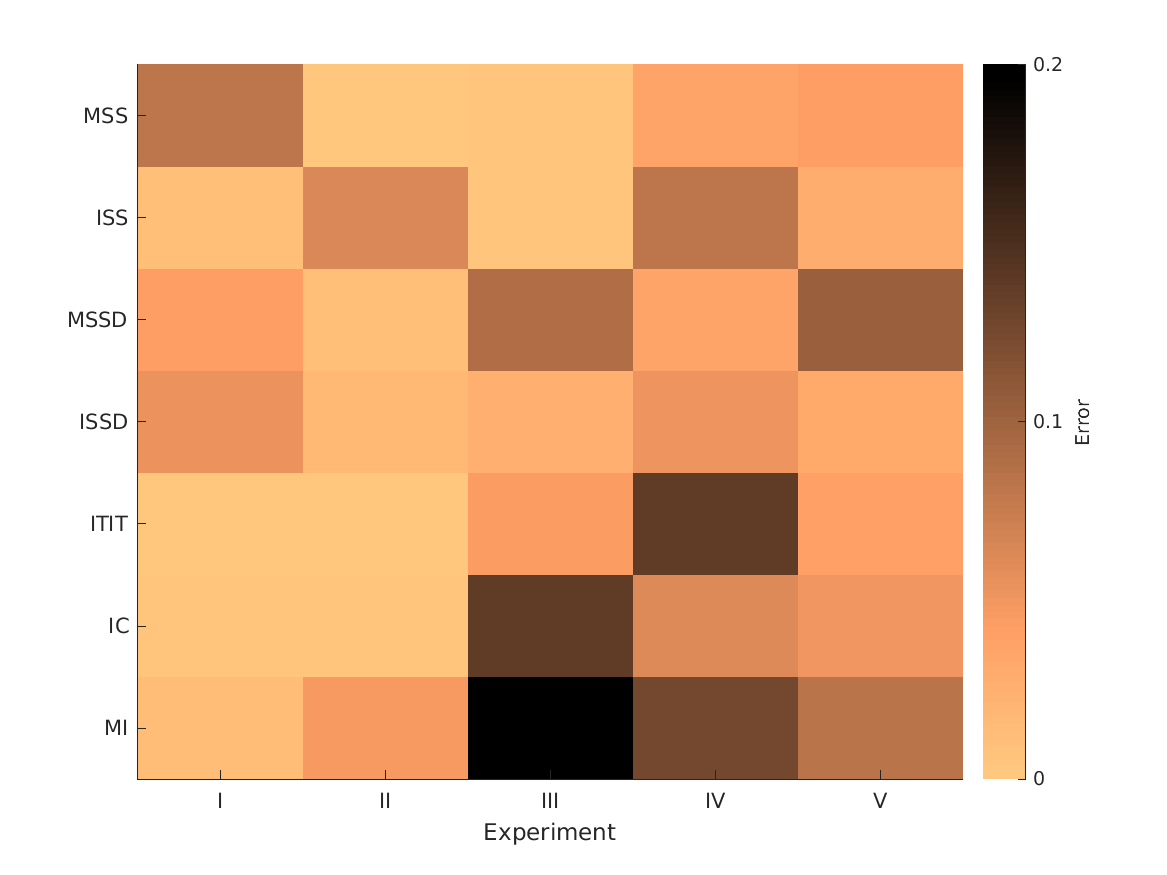
|
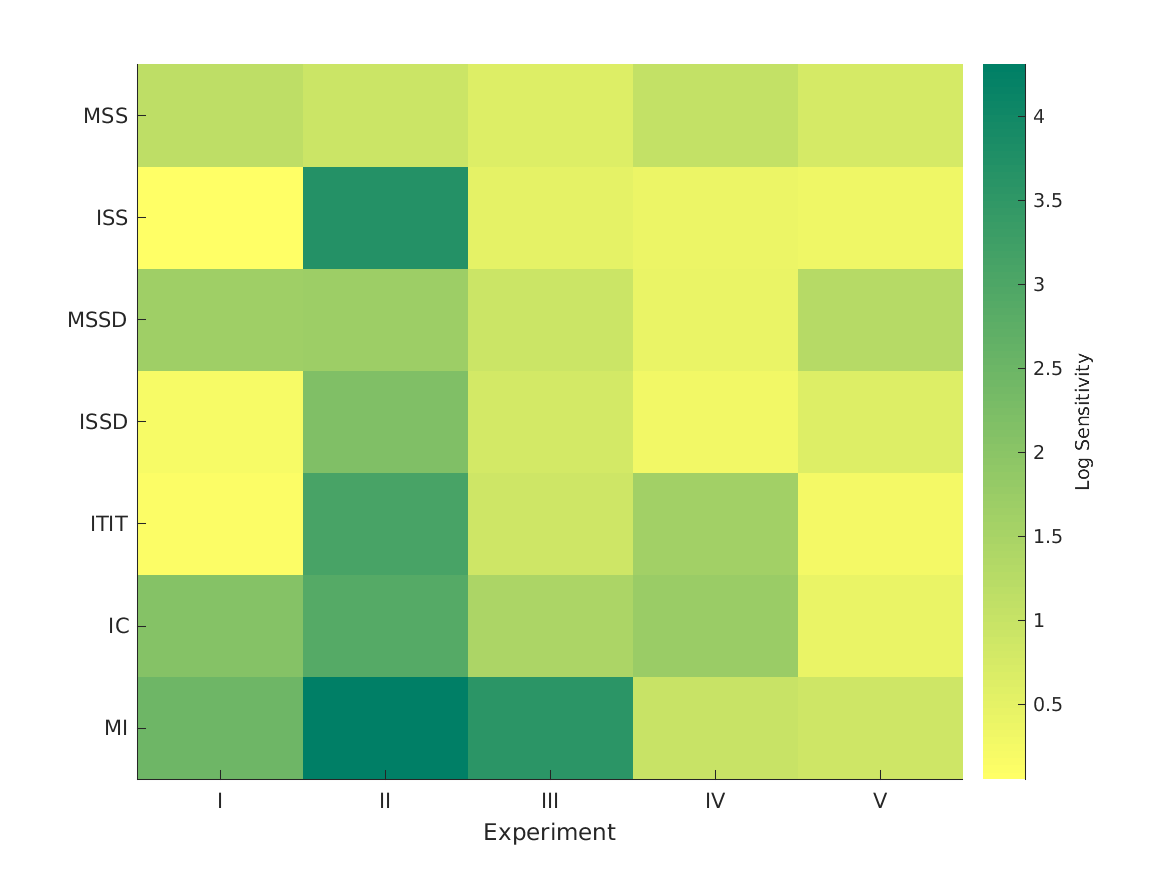
|
To display results for different decision strategies use :
exp_baumgartner2021('fig4');
|

|

|
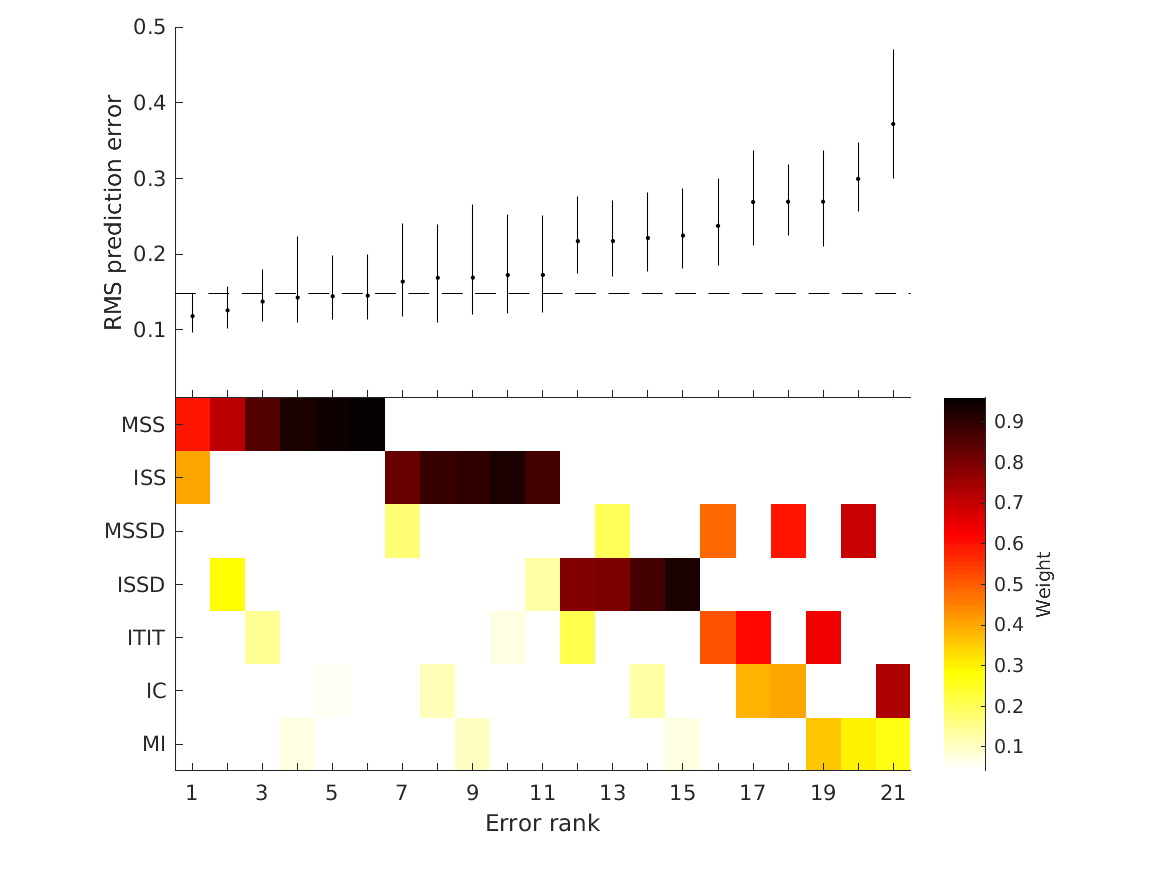
|
References:
R. Baumgartner, D. K. Reed, B. Tóth, V. Best, P. Majdak, H. S. Colburn, and B. Shinn-Cunningham. Asymmetries in behavioral and neural responses to spectral cues demonstrate the generality of auditory looming bias. Proceedings of the National Academy of Sciences, 2017. [ DOI ]
A. W. Boyd, W. M. Whitmer, J. J. Soraghan, and M. A. Akeroyd. Auditory externalization in hearing-impaired listeners: The effect of pinna cues and number of talkers. The Journal of the Acoustical Society of America, 131(3):EL268--EL274, 2012. [ DOI ]
W. M. Hartmann and A. Wittenberg. On the externalization of sound images. The Journal of the Acoustical Society of America, 99(6):3678--88, June 1996.
H. G. Hassager, F. Gran, and T. Dau. The role of spectral detail in the binaural transfer function on perceived externalization in a reverberant environment. The Journal of the Acoustical Society of America, 139(5):2992--3000, 2016. [ www: ]














